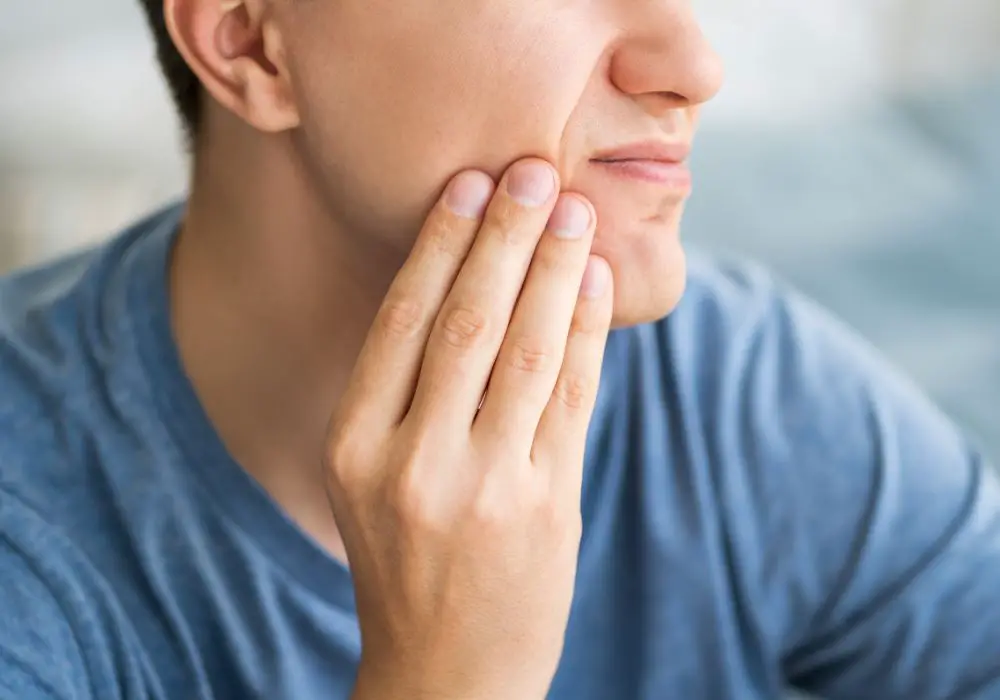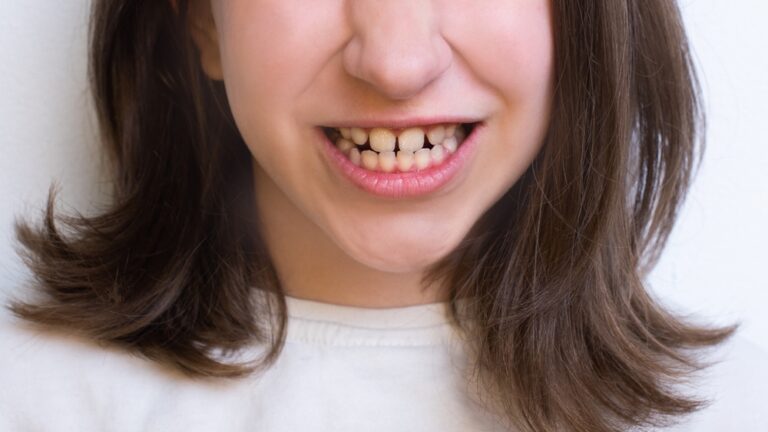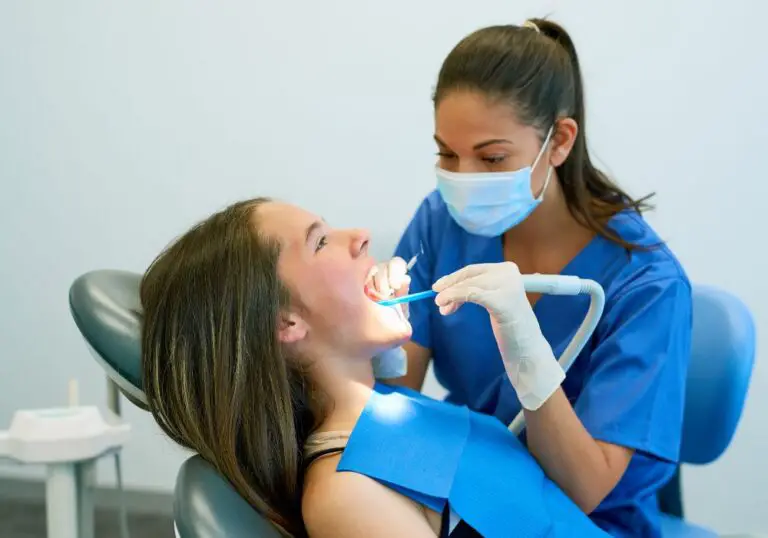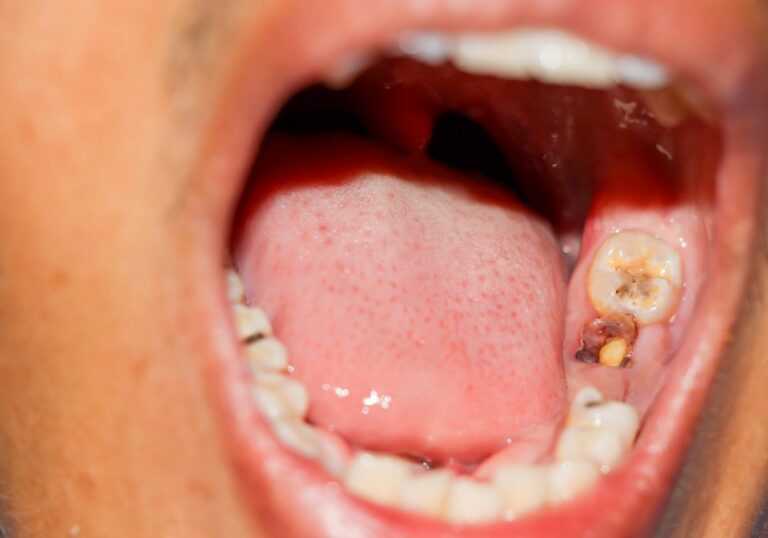The removal of wisdom teeth is commonly done to address issues like pain, infections, or crowding with other teeth. But it’s also often performed for cosmetic reasons – to improve the look of the jawline. Many people wonder if taking out wisdom teeth can make their jawline slimmer, more oval, or more defined.
The impacts on jawline shape after wisdom tooth extraction are highly variable from person to person and not completely predictable. But under the right circumstances, it can provide aesthetic improvements for some individuals. Let’s look in-depth at how wisdom teeth affect jaw shape, whether their removal helps the jawline, what results you can expect, and how to support changes after surgery.
How wisdom teeth can negatively impact jawline appearance

Wisdom teeth are the last molars to erupt, usually between ages 17 to 25, located in the far back of the mouth. When these third molars come in or become impacted, they can affect jaw dimensions and shape in a few ways:
- Flares molars next to them – The eruption of wisdom teeth puts outward pressure on the second molars, potentially causing flaring, twisting, or misalignment of these teeth. This can make the distance between the front and back teeth wider.
- Widens the jaw – In some cases, the presence of wisdom teeth can lead to additional width specifically in the back third of the jaw. This can give the jaw a wider, more square appearance than the preferred oval shape.
- Causes swelling or cysts – Impacted wisdom teeth are prone to infections, swelling, and cyst formation along the jawline. This can lead to a temporary puffiness and loss of definition along the back of the jaw.
- Changes bite alignment – Erupted wisdom teeth may shift the bite alignment of back molars. This could then gradually affect positioning of the jaw and sometimes front teeth as well over time.
- Pushes jaw forward – Incorrectly aligned wisdom teeth may push the lower jaw slightly forward. This can minimize definition of the jaw angle.
Collectively these kinds of dental problems can make the lower third of the face appear wider, blockier, or less sculpted. Let’s look at whether removing wisdom teeth can help reverse these issues.
Does extracting wisdom teeth improve the jawline?
Extracting problematic wisdom teeth is often touted as a solution for improving jawline definition. But does it really help? Here are some key points:
- Can allow jaw to resettle – Without the eruption pressures from wisdom teeth, the jaw may gradually shift back towards its original position or alignment. But this is not guaranteed.
- Eliminates infections – Removing wisdom teeth gets rid of swelling, cysts, and other issues that can obscure the jawline and cause a puffy look.
- May reduce jaw width – A 2009 study showed 68% of patients had a decrease in jaw width after extractions. But the amount of change varies greatly.
- Opens bite – This can eliminate forward pressure on the chin and allow better definition of the jaw angle.
- Resolves crowding – Extracting wisdom teeth can reduce crowding of back molars. This may subtly improve alignment of all teeth.
- Highest impact if done early – Removing wisdom teeth in late teens provides more opportunity to guide jaw growth than waiting until 20s.
- Not a cure-all solution – Wisdom tooth extraction alone may only provide minor improvements in some people with naturally wide jaw structure.
So while extracting wisdom teeth can support cosmetic shaping of the jawline in some cases, results are unpredictable and involve many factors.
Variables that determine the jawline effects of wisdom tooth removal

The actual jawline changes an individual experiences after wisdom tooth extraction depend on certain variables:
- Existing jaw and dental structure – Those with naturally narrow vs. wide jaw shapes will see different amounts of change.
- Degree of impaction – Severely impacted wisdom teeth generally put more pressure on the jaw than those that have fully erupted.
- Number extracted – Removing all 4 wisdom teeth affects jaw position more than a single extraction.
- Age at time of surgery – Extracting wisdom teeth in your teens provides more opportunity to guide remaining jaw/tooth development than waiting until your 20s.
- Surgical technique – A less invasive extraction method helps maintain the bone and tissue architecture that supports the jawline.
- Oral posture and habits – Tongue position and oral habits after surgery can help or hinder ideal jaw positioning. Using a night guard or retainer can guide teeth into better alignment after extractions.
- Individual variation – Subtle differences in anatomy, healing ability, and genetics affect surgical outcomes.
Your oral surgeon should thoroughly evaluate your mouth structure to determine if wisdom tooth removal may provide aesthetic benefits in your unique situation.
Tips for maximizing jawline enhancement from wisdom tooth extractions
If you are getting wisdom teeth removed for cosmetic reasons, here are some tips to help support improvements to your jawline:
- Oral muscle training – Practice proper tongue posture and swallowing technique after surgery. Do facial muscle exercises to tone the jawline.
- Low surgical trauma – Discuss minimally invasive extraction options with your oral surgeon to limit bone and tissue damage.
- Retainers – Wear retainers as recommended to guide your teeth into optimal alignment post-surgery.
- Manage swelling – Follow ice pack protocol and diet instructions to minimize swelling that can temporarily obscure the jawline. Stay hydrated.
- Skin care – Massage and hydrate the skin along the jaw to minimize scarring and aid smoother contours.
- Visit your dentist – Get regular dental checkups for adjustment of any appliances and to monitor changes.
- Be patient – It can take several months for complete remodeling and settling of the jawline after extractions. Allow time for full effects.
Risks and limitations of wisdom teeth removal for the jawline

While wisdom tooth extraction holds promise for some patients, there are limitations and risks to consider:
- Nerve injury – Lingering numbness or nerve damage can cause an uneven jawline look. This may resolve over time.
- Bone loss – Excessive bone removal during impaction surgery can cause unnatural shaping along the jaw angle.
- Relapse – The jaw may relapse towards its original position months or years later if oral habits like tongue thrusting are not corrected.
- Limited effectiveness – Patients with square, wide jaw structure are less likely to see major narrowing from extraction alone.
- Aging factors – The natural effects of aging can diminish positive jawline changes achieved in youth through wisdom tooth removal.
Discuss these possibilities thoroughly with your oral surgeon before proceeding.
Alternative treatments beyond wisdom tooth removal for an improved jawline
While wisdom tooth extraction may benefit some patients, there are additional cosmetic dentistry and surgery options to consider for enhancing the jawline:
- Orthognathic surgery – Jaw realignment or sculpting for significant shape changes not achievable with extraction alone.
- Chin augmentation – Using chin implants or fillers to balance jaw proportions. Can make the jawline look slimmer.
- Jaw botox – Can provide liposuction effects reducing jowl volume along the jaw and neck. Results last 4-6 months.
- Fillers – Injectables like Voluma or Radiesse can sharpen the jaw angle and minimize jowls.
- Buccal fat removal – Reduces fullness along the upper jawline due to buccal fat pads.
- Neck lift – Surgically tightens neck skin and reduces sagging that obscures the jaw.
- Kybella – Reduces fat under the chin that can hide the jawline. Multiple treatments needed.
- Facial exercises – Toning and resistance training exercises can sharpen jawline muscle definition.
Discuss a customized treatment plan with your providers to determine which combination of approaches makes sense to achieve your ideal jawline goals.
Conclusion
The extraction of wisdom teeth may support a slimmer, more defined jawline appearance in some individuals – by allowing the jaw to resettle into a more ideal position and reducing swelling or crowding caused by problematic wisdom teeth. However, the degree of cosmetic change varies greatly. Maximum benefits occur when surgery is done at an early age and is followed up with proper oral posture and dental appliances. Wisdom teeth removal should not be viewed as a guaranteed solution for poor jawline definition on its own. But when pursued for the right reasons, it can be a contributing factor in achieving an improved jawline contour when incorporated into comprehensive dental care and treatment.
Frequently Asked Questions
Q: How long does wisdom teeth removal take to slim the face?
A: It may take between 3 to 6 months to see the full effects on the jawline and facial contours after wisdom teeth are removed. The process involves surgical healing, jaw bone remodeling, and subtle repositioning of teeth. Final aesthetic changes are usually evident by one year post-surgery.
Q: Can wisdom teeth removal change face shape?
A: In some cases, yes. By altering jaw positioning and width, wisdom tooth extraction can sometimes subtly change the lower third of the face from square to a more oval shape. But other facial features remain unchanged. Total facial shape is influenced by many factors, not just jawline.
Q: Does getting wisdom teeth out make cheeks hollow?
A: Wisdom tooth removal does not inherently lead to sunken or hollow cheeks. Maintaining proper oral posture and facial muscle tone helps prevent a hollow look. Significant loss of facial volume and fat after extraction surgery is not normal or expected. Follow up with your oral surgeon if this occurs.
Q: Can I get wisdom teeth removed without an oral surgeon?
A: Wisdom teeth should only be removed by an trained oral surgeon due to the complicated impaction and roots. Removing them under just local anesthesia by a general dentist risks nerve damage, jaw fracture, and other complications. Get reputable surgeon referrals before proceeding.
Q: Do wisdom teeth change your smile?
A:Direct changes to the smile itself are unlikely following wisdom teeth removal. But improvements in jaw alignment and reduced teeth crowding may subtly improve tooth positioning over time for some people. Achieving major smile changes requires coordinated orthodontic treatment over months.







